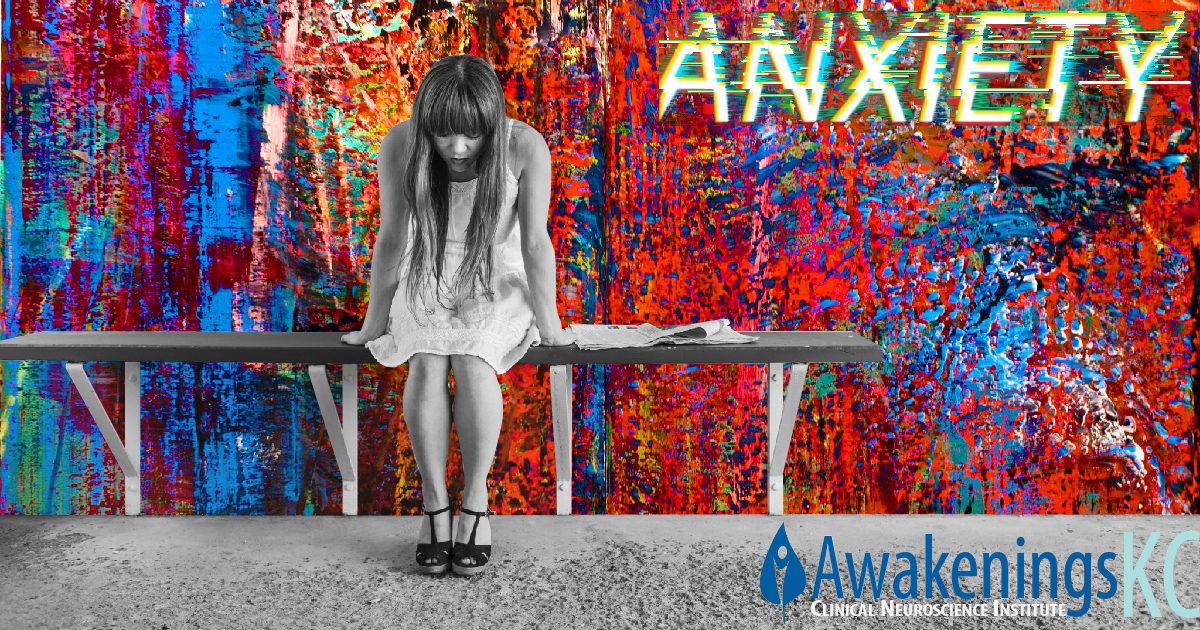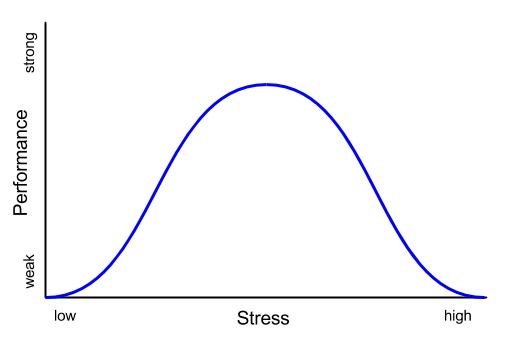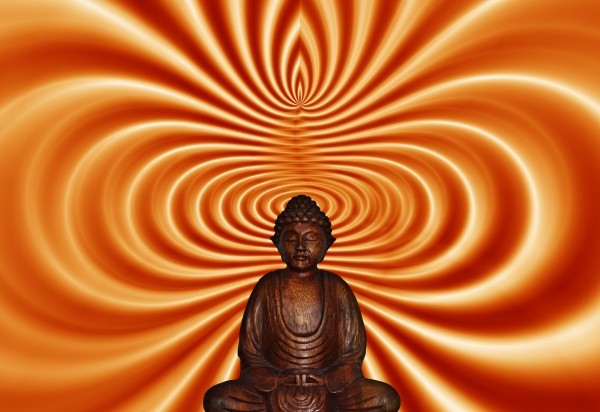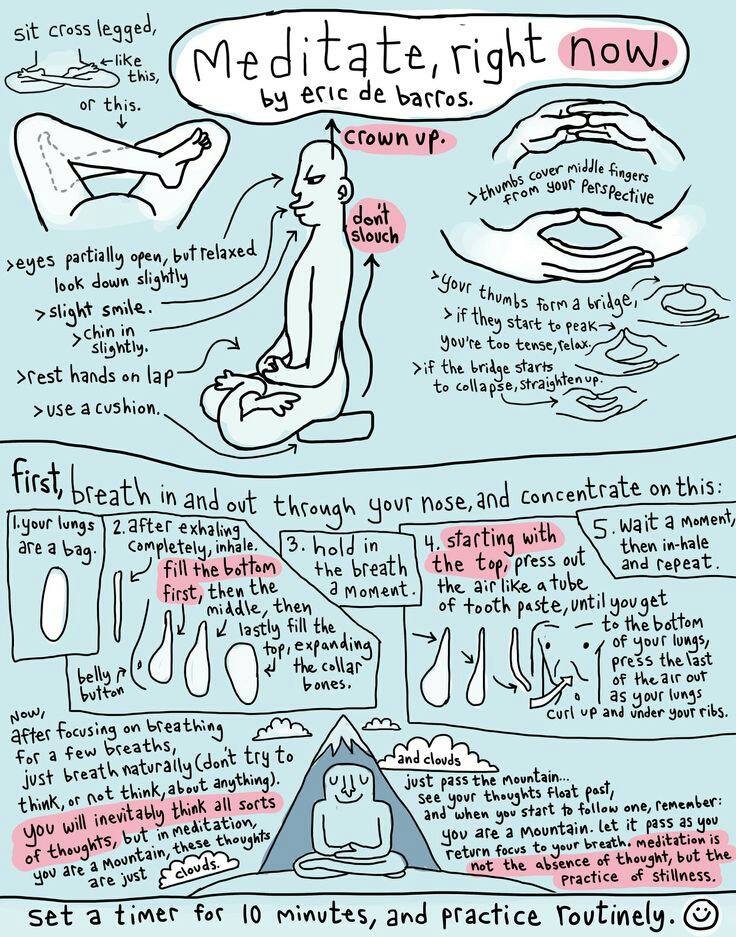6 Ways to Cope With Your Anxiety

Have you ever felt tension in your chest when you feel stressed? Or those short-lived moments of intense panic and fear? Maybe breathing or concentrating seems impossible? Many of us can likely relate to these questions and we call this experience anxiety. Some might think that only a select few of us have to deal with anxiety when in fact it is something all of us experience, to some degree, at some point in our lives.
Anxiety is an emotion characterized by feelings of tension and worried thoughts. It is accompanied by physical symptoms such as sweating, trembling, or increased heart rate [1]. Popular convention suggests that anxiety is just a mental disorder when it is actually part of the body’s natural response to anticipation of future threats. In fact, some arousal (anxiety) is actually helpful for increasing productivity levels.
The Yerkes-Dodson Law suggests that there is an empirical relationship between stress and performance. Moderate levels of stress can help you concentrate and focus on a given task. However, extreme levels of anxiety can interrupt your concentration and interfere with your performance. Anxiety culminates into anxiety disorder when feelings of tension and worry become too excessive and hard to control, causes significant distress or impairment, and occurs more often than not for at least six months [2]. The chart below shows that performance level is strong when stress is moderate and hindered when stress is too low or too high.

It’s important to understand anxiety affects each person differently and symptoms can vary. Anxiety disorders are the most common mental disorder and affects approximately 30% of adults at some point in their lives [3]. The type of anxiety disorder can vary and range from generalized anxiety disorder to more specific phobias and panic disorder. Potential causes and symptoms of anxiety disorders include:
Possible Causes
- Genetics
- Stress from work, social settings, financials, trauma, etc.
- Existential panic
- Illict Abuse
- Excess Caffeine Use
- Lack of Sleep
- Poor Diet
- Lack of Exercise
- High heart rate
- Panic Attacks
- Muscle tension
- Irritability
- Racing thoughts
- High heart rate
- Insomnia
- Detachment from reality
- Difficulty/inability to concentrate
- Nausea
- Fatigue
- Shortness of breath
Symptoms
Coping strategies for Anxiety
A key component of anxiety is your body’s physical response; your heart rate and breathing speeds up and you perspire and feel tense. A state of relaxation is an important step in comprehensive treatment as it will help slow down or manage physical effects. It’s harder to feel anxious if you are already in a calm, relaxed state and it’s easier to calm yourself by practicing regular relaxation techniques. The elements that characterize a state of relaxation include:
Elements of Relaxation
- Slow and even heart rate
- Deep and even breathing
- Loose and relaxed muscles
- Hands and feet feel warm, heavy, or both
- Mind feels at peace
- The body has energy for several hours
- Feeling refreshed

The following 6 coping strategies can help slow down your heart rate and breathing pattern to manage your anxiety.
- AWARE Method
- Mediation
- Visualization
- Progressive Muscle Relaxation
- Autogenic Relaxation
- Diaphragmatic Breathing
Professional Treatment for Anxiety Disorder
While these techniques are useful for managing symptoms of anxiety, there are proven treatment options that help fight against anxiety disorders such as
- Psychotherapy
- Pharmacotherapy
- Diet/exercise management
- Transcranial Magnetic Stimulation (TMS)
- Intensive Outpatient Program group therapy (IOP)
Psychotherapy attempts to help a patient identify triggers of his/her anxiety and learn cognitive behaviors to help deal with the issues.
Pharmacotherapy and diet/exercise management can improve serotonin levels in the brain and stabilize mood – an effective option for treating anxiety symptoms [6].
TMS is a non-invasive, outpatient treatment option that uses a pulsed magnetic field to stimulate function in specific regions of the brain and help treat anxiety. Researchers investigated how effective TMS is as a treatment option for generalized anxiety disorder and the results suggest 84.6% of patients’ anxiety symptoms were in remission [7].
IOPs are useful for providing cognitive behavioral therapy (CBT), Dialectical Behavioral Therapy(DBT), crisis stabilization, and motivational and supportive therapy. IOPs show to be effective through continual support from the group and clinical team as they provide a steady increase in motivation, self-esteem, safety and security, and decrease unwanted behaviors associated with anxiety such as anxiousness and irritability [8].
All of us experience anxiety, and while oftentimes you can manage it, you shouldn’t wait until your symptoms reach a critical stage before seeking professional help. If you think you might be suffering from anxiety and personal strategies aren’t working to manage it, consider consulting a mental health professional. Effective treatment options vary from person to person, so start by talking to a psychiatrist or therapist and learn what works best for you.
References
[1] Anxiety. (n.d.). Retrieved from American Psychological Association website: http://www.apa.org/topics/anxiety/
[2] Baldwin, D., MA, DM FRCPsych. (2017, May). Generalized anxiety disorder in adults: Epidemiology, pathogenesis, clinical manifestations, course, assessment, and diagnosis (M. B. Stein, MD, MPH & R. Hermann, MD, Eds.). Retrieved from https://www.uptodate.com/contents/generalized-anxiety-disorder-in-adults-epidemiology-pathogenesis-clinical-manifestations-course-assessment-and-diagnosis/print?source=search_result&search=gad&selectedTitle=1~55
[3] Parekh, R., M.D., M.P.H. (Ed.). (2107, January). What are anxiety disorders? Retrieved from https://www.psychiatry.org/patients-families/anxiety-disorders/what-are-anxiety-disorders
[4] Christenen, K., MA, (n.d.). A Guide to Progressive Muscle Relaxation. Retrieved from https://urbanbalance.com/guide-progressive-muscle-relaxation/
[5] Wallace, K. (1970). Physiological Effects of Transcendental Meditation. American Association for the Advancement of Science, 167(3926), 1751-1754. http://science.sciencemag.org/content/167/3926/1751
[6] Young, S. N. (2007). How to increase serotonin in the human brain without drugs. Journal of Psychiatry & Neuroscience : JPN, 32(6), 394–399.
[7] White, D., & Tavakoli, S. (2015). Repetitive transcranial magnetic stimulation for treatment of major depressive disorder with comorbid generalized anxiety disorder. Annals of Clinical Psychiatry: Official Journal of American Academy of Clinical Psychiatrists, 27(3), 192-206. Retrieved from https://www.ncbi.nlm.nih.gov/pubmed/26247218
[8] Davila, M., MD (Ed.).(n.d.) Adult Mental Health IOP. Retrieved from http://awakeningskc.com/intensive-outpatient-programs/





